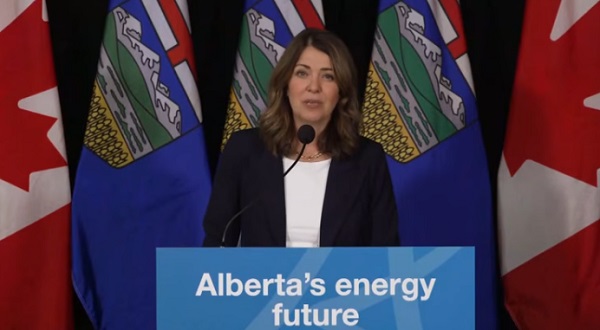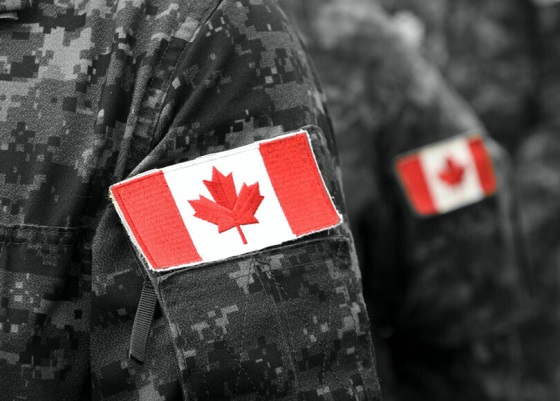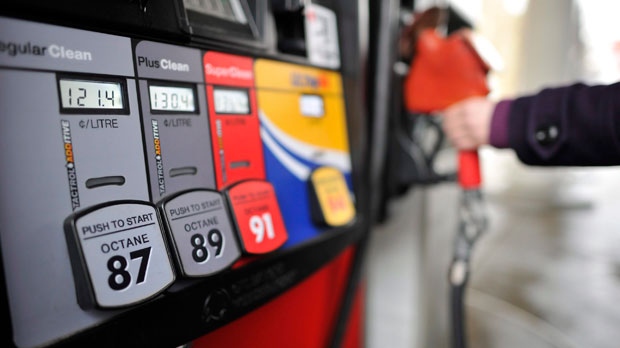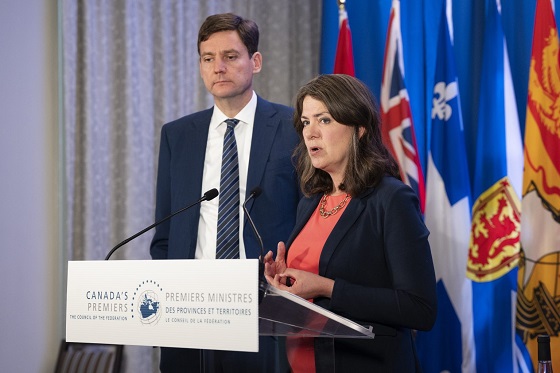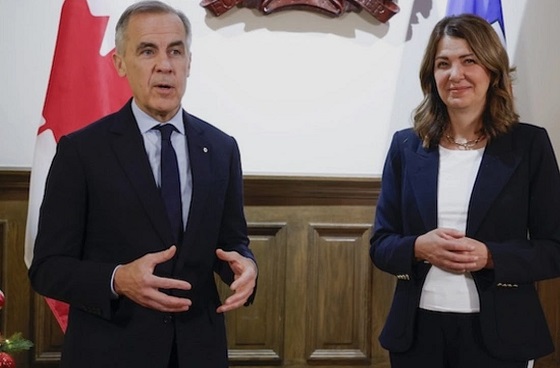Energy
New oil and gas drilling company launched by Indian Resource Council of Canada
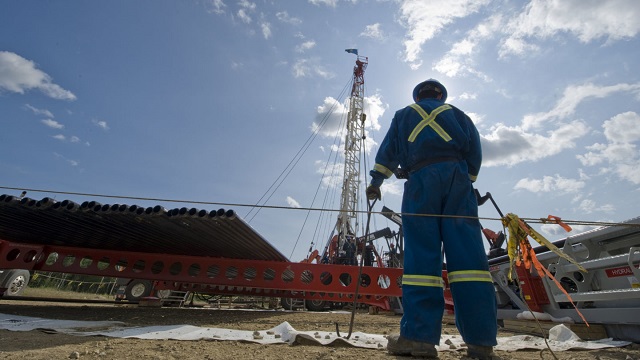
Energy worker in Alberta. Photo courtesy Government of Alberta
From the Canadian Energy Centre
By Mario Toneguzzi and Deborah Jaremko
‘This is a great opportunity for our members to be on the ground floor of a First Nations-supported energy services company’
Indigenous ownership in Canadian oil and gas continues to grow with the launch of a new drilling company.
Along with industry heavyweights, the Indian Resource Council of Canada (IRC) is one of the founding partners of newly-formed Indigena Drilling. IRC’s aim is to provide economic benefits to its more than 155 member nations across the country.
“[This] is a great opportunity for our members to be on the ground floor of a First Nations-supported energy services company,” said Stephen Buffalo, Indian Resource Council CEO.
Gurpreet Lail, CEO of Enserva, a national trade association representing the service, supply, and manufacturing sectors of the Canadian energy industry, welcomes the new company.
“There are so many discussions happening around Indigenous economic reconciliation, but this actually is doing that instead of just talking about it,” she said.
“This kind of partnership is actually going to help all Nations, not just one.”
Indigena Drilling is an evolution of the relationship between Indigenous communities and drilling operators, says Mark Scholz, CEO of the Canadian Association of Energy Contractors (CAOEC).
“We see a lot of joint partnerships within the industry where it could be ownership or shared ownership of a rig, but I think this is a unique one coming from the lens of a company starting out with significant ownership from an Indigenous perspective would be quite new, at least in the last 10, 20 years,” he said.
Historically it has been more common for Indigenous partnerships on the service rig side of the industry, Scholz said. The main difference is that smaller service rigs conduct work on existing wells, versus drilling rigs that drill new wells.
“A service rig can actually stay very tethered to a particular area and doesn’t have to move long distances, so it’s actually quite conducive to a lot of First Nations communities that often want to stay in the community,” Scholz said.
The CAOEC forecasts approximately 6,400 wells will be drilled across western Canada this year, an increase of about 800 wells compared to 2022.
Scholz said he expects more Indigenous ownership examples like Indigena in the future, particularly in British Columbia, because of the tremendous drilling opportunities that are going to exist in supporting liquefied natural gas (LNG) exports.
“Obviously long-term, both Alberta and British Columbia have huge gas reserves. As we start talking about the energy transformation, gas is going to be incredibly important,” he said.
“I think we’re going to see more LNG takeaway capacity that’s going to have First Nations support and I do see additional opportunities for First Nations communities to have a very robust energy services sector within their communities that they’re going to be operating in.”
Lail said there are more Indigenous-owned energy services companies today than previously, but more need to come into the space.
“As an industry on the whole, I think we’ve done a really good job at moving the needle but there’s more movement that needs to happen,” she said.
“I think this is a good news story and I hope we get more of these into the future.”
Alberta
Carney’s pipeline deal hits a wall in B.C.

This article supplied by Troy Media.
Carney’s attempt to ease Canada’s dependence on the U.S. stirs a backlash in B.C., raises Indigenous concerns and rattles his own party
The Memorandum of Understanding (MOU) between Prime Minister Mark Carney and Alberta Premier Danielle Smith has opened a political hornet’s nest, exposing deep divisions within the Liberal Party and forcing a national debate that has been avoided for years.
Carney was under mounting pressure to respond to U.S. tariffs that threaten to carve billions out of Canada’s economy. The United States buys more than 95 per cent of Canada’s oil exports, leaving the country highly exposed to U.S. policy decisions. That pressure is now driving his push for a route to the Pacific, a project that could change Canada’s economic future but also destabilize his already fragile minority government.
Carney knows the political risk. His government could fall at any time, which only raises the stakes. Even so, he has pressed ahead. The agreement with Alberta lays early groundwork for a new pipeline to the Pacific. It would expand the oil sands, ease some environmental obligations and revive a proposal industry leaders have pushed for years.
The route is far from settled, but it is expected to run to B.C.’s northern coast and open access to Asian buyers. A Pacific route would finally give Canada a direct path into Asian energy markets, where demand remains strong and prices are often higher than in the United States.
If Carney expected broad support, he did not get it, especially in British Columbia. Because B.C. is the only province with a deep-water port capable of handling large crude carriers, it is the only path a west-coast pipeline can take. The province is now the central battleground, and whether the project succeeds will depend on what happens there.
B.C. Premier David Eby criticized the lack of consultation. “It would have been good for B.C. to be at the table,” he said, warning that the project risks undermining Indigenous support for the province’s liquefied natural gas plans. He also noted that the pipeline has no private backer and no commitments from First Nations, two obstacles that have tripped up projects before.
The backlash quickly spread to Ottawa. Steven Guilbeault, the former environment minister and the most prominent environmentalist ever to serve in a federal cabinet, resigned from cabinet in direct response to the MOU. He said the proposed pipeline “would have major environmental impacts”. Green Party Leader Elizabeth May said his departure “dashes the last hope that Mark Carney is going to have a good climate record ever.”
Several B.C. Liberal MPs echoed concerns about the political cost. CBC News reported anger inside the caucus, with some MPs “seething” over the agreement and worried about losing climate-focused voters.
The voters those MPs fear may not be as opposed as they think. An October Angus Reid Institute survey found that a solid majority of Canadians support a pipeline from northern Alberta to the northwest B.C. coast. In British Columbia, support outweighs opposition by a wide margin. That challenges Eby’s claim that the project lacks public backing. Carney may have more room to manoeuvre than his critics admit.
The most significant challenge, however, comes from Indigenous leaders. British Columbia is the only province that has formally adopted the United Nations Declaration on the Rights of Indigenous Peoples (UNDRIP) into law, giving First Nations a stronger legal position in major project decisions. Court rulings over the past two decades have affirmed a duty to consult and, in some cases, accommodate Indigenous communities, giving them major influence over large projects.
A group representing Coastal First Nations in B.C. said the pipeline “will never happen”. The Union of B.C. Indian Chiefs said it is “loudly objecting” to the MOU, arguing it was drafted without involvement from coastal First Nations and does not meet consultation standards outlined in UNDRIP. “The answer is still no and always will be,” said UBCIC Grand Chief Stewart Phillip. He also said lifting the crude oil tanker ban would amount to bulldozing First Nation rights. Without Indigenous consent, the project cannot proceed, and Carney knows this is the single largest barrier he faces.
Carney’s reasoning is straightforward. The long-term danger of relying on one market outweighs the short-term turbulence created by the pipeline fight. The MOU suggests Ottawa is prepared to reconsider projects once thought politically impossible in order to protect Canada’s economic future. He is betting that doing nothing is the bigger risk.
Whether this pipeline moves forward is uncertain, and the obstacles are real. One fact, however, remains clear. Canada cannot keep betting its stability on a single market.
Toronto-based Rashid Husain Syed is a highly regarded analyst specializing in energy and politics, particularly in the Middle East. In addition to his contributions to local and international newspapers, Rashid frequently lends his expertise as a speaker at global conferences. Organizations such as the Department of Energy in Washington and the International Energy Agency in Paris have sought his insights on global energy matters.
Troy Media empowers Canadian community news outlets by providing independent, insightful analysis and commentary. Our mission is to support local media in helping Canadians stay informed and engaged by delivering reliable content that strengthens community connections and deepens understanding across the country.
Energy
Unceded is uncertain
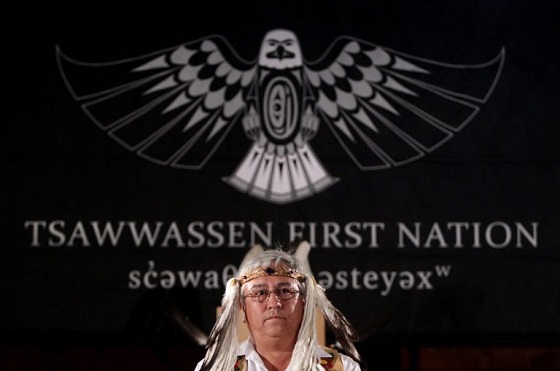
Tsawwassen Speaker Squiqel Tony Jacobs arrives for a legislative sitting. THE CANADIAN PRESS/Darryl Dyck
From Resource Works
Cowichan case underscores case for fast-tracking treaties
If there are any doubts over the question of which route is best for settling aboriginal title and reconciliation – the courts or treaty negotiations – a new economic snapshot on the Tsawwassen First Nation should put the question to rest.
Thanks to a modern day treaty, implemented in 2009, the Tsawwassen have leveraged land, cash and self-governance to parlay millions into hundreds of millions a year, according to a new report by Deloitte on behalf of the BC Treaty Commission.
With just 532 citizens, the Tsawwassen First Nation now provides $485 million in annual employment and 11,000 permanent retail and warehouse jobs, the report states.
Deloitte estimates modern treaties will provide $1 billion to $2 billion in economic benefits over the next decade.
“What happens, when you transfer millions to First Nations, it turns into billions, and it turns into billions for everyone,” Sashia Leung, director of international relations and communication for the BC Treaty Commission, said at the Indigenous Partnership Success Showcase on November 13.
“Tsawwassen alone, after 16 years of implementing their modern treaty, are one of the biggest employers in the region.”

BC Treaty Commission’s Sashia Leung speaks at the Indigenous Partnerships Success Showcase 2025.
Nisga’a success highlights economic potential
The Nisga’a is another good case study. The Nisga’a were the first indigenous group in B.C. to sign a modern treaty.
Having land and self-governance powers gave the Nisga’a the base for economic development, which now includes a $22 billion LNG and natural gas pipeline project – Ksi Lisims LNG and the Prince Rupert Gas Transmission line.
“This is what reconciliation looks like: a modern Treaty Nation once on the sidelines of our economy, now leading a project that will help write the next chapter of a stronger, more resilient Canada,” Nisga’a Nation president Eva Clayton noted last year, when the project received regulatory approval.
While the modern treaty making process has moved at what seems a glacial pace since it was established in the mid-1990s, there are some signs of gathering momentum.
This year alone, three First Nations signed final treaty settlement agreements: Kitselas, Kitsumkalum and K’omoks.
“That’s the first time that we’ve ever seen, in the treaty negotiation process, that three treaties have been initialed in one year and then ratified by their communities,” Treaty Commissioner Celeste Haldane told me.
Courts versus negotiation
When it comes to settling the question of who owns the land in B.C. — the Crown or First Nations — there is no one-size-fits-all pathway.
Some First Nations have chosen the courts. To date, only one has succeeded in gaining legal recognition of aboriginal title through the courts — the Tsilhqot’in.
The recent Cowichan decision, in which a lower court recognized aboriginal title to a parcel of land in Richmond, is by no means a final one.
That decision opened a can of worms that now has private land owners worried that their properties could fall under aboriginal title. The court ruling is being appealed and will almost certainly end up having to go to the Supreme Court.
This issue could, and should, be resolved through treaty negotiations, not the courts.
The Cowichan, after all, are in the Hul’qumi’num treaty group, which is at stage 5 of a six-stage process in the BC Treaty process. So why are they still resorting to the courts to settle title issues?
The Cowichan title case is the very sort of legal dispute that the B.C. and federal governments were trying to avoid when it set up the BC Treaty process in the mid-1990s.
Accelerating the process
Unfortunately, modern treaty making has been agonizingly slow.
To date, there are only seven modern implemented treaties to show for three decades of works — eight if you count the Nisga’a treaty, which predated the BC Treaty process.
Modern treaty nations include the Nisga’a, Tsawwassen, Tla’amin and five tribal groups in the Maa-nulth confederation on Vancouver Island.
It takes an average of 10 years to negotiate a final treaty settlement. Getting a court ruling on aboriginal title can take just as long and really only settles one question: Who owns the land?
The B.C. government has been trying to address rights and title through other avenues, including incremental agreements and a tripartite reconciliation process within the BC Treaty process.
It was this latter tripartite process that led to the Haida agreement, which recognized Haida title over Haida Gwaii earlier this year.
These shortcuts chip away at issues of aboriginal rights and title, self-governance, resource ownership and taxation and revenue generation.
Modern treaties are more comprehensive, settling everything from who owns the land and who gets the tax revenue from it, to how much salmon a nation is entitled to annually.
Once modern treaties are in place, it gives First Nations a base from which to build their own economies.
The Tsawwassen First Nation is one of the more notable case studies for the economic and social benefits that accrue, not just to the nation, but to the local economy in general.
The Tsawwassen have used the cash, land and taxation powers granted to them under treaty to create thousands of new jobs. This has been done through the development of industrial, commercial and residential lands.
This includes the development of Tsawwassen Mills and Tsawwassen Commons, an Amazon warehouse, a container inspection centre, and a new sewer treatment plant in support of a major residential development.
“They have provided over 5,000 lease homes for Delta, for Vancouver,” Leung noted. “They have a vision to continue to build that out to 10,000 to 12,000.”
Removing barriers to agreement
For First Nations, some of the reticence in negotiating a treaty in the past was the cost and the loss of tax exemptions. But those sticking points have been removed in recent years.
First Nations in treaty negotiations were originally required to borrow money from the federal government to participate, and then that loan amount was deducted from whatever final cash settlement was agreed to.
That requirement was eliminated in 2019, and there has been loan forgiveness to those nations that concluded treaties.
Another sticking point was the loss of tax exemptions. Under Section 87 of Indian Act, sales and property taxes do not apply on reserve lands.
But under modern treaties, the Indian Act ceases to apply, and reserve lands are transferred to title lands. This meant giving up tax exemptions to get treaty settlements.
That too has been amended, and carve-outs are now allowed in which the tax exemptions can continue on those reserve lands that get transferred to title lands.
“Now, it’s up to the First Nation to determine when and if they want to phase out Section 87 protections,” Haldane said.
Haldane said she believes these recent changes may account for the recent progress it has seen at the negotiation table.
“That’s why you’re seeing K’omoks, Kitselas, Kitsumkalum – three treaties being ratified in one year,” she said. “It’s unprecedented.”
The Mark Carney government has been on a fast-tracking kick lately. But we want to avoid the kind of uncertainty that the Cowichan case raises, and if the Carney government is looking for more things to fast-track that would benefit First Nations and the Canadian economy, perhaps treaty making should be one of them.
Resource Works News
-

 Business1 day ago
Business1 day agoRecent price declines don’t solve Toronto’s housing affordability crisis
-

 Censorship Industrial Complex22 hours ago
Censorship Industrial Complex22 hours agoA Democracy That Can’t Take A Joke Won’t Tolerate Dissent
-
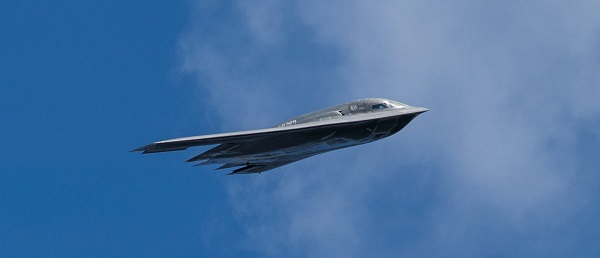
 armed forces2 days ago
armed forces2 days agoGlobal Military Industrial Complex Has Never Had It So Good, New Report Finds
-
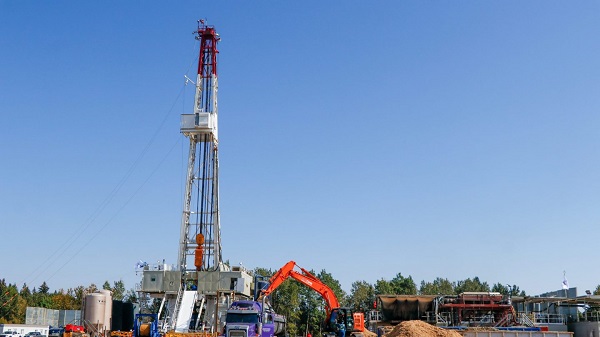
 Alberta2 days ago
Alberta2 days agoEmissions Reduction Alberta offering financial boost for the next transformative drilling idea
-

 Artificial Intelligence2 days ago
Artificial Intelligence2 days agoThe Emptiness Inside: Why Large Language Models Can’t Think – and Never Will
-

 Daily Caller1 day ago
Daily Caller1 day agoTech Mogul Gives $6 Billion To 25 Million Kids To Boost Trump Investment Accounts
-

 Business1 day ago
Business1 day agoCanada’s future prosperity runs through the northwest coast
-

 Alberta22 hours ago
Alberta22 hours agoAlberta will defend law-abiding gun owners who defend themselves





